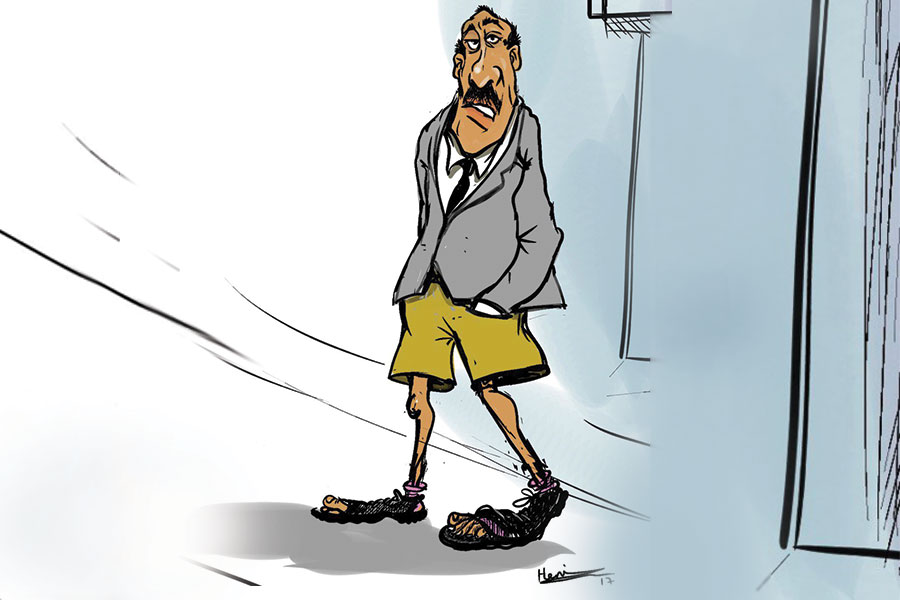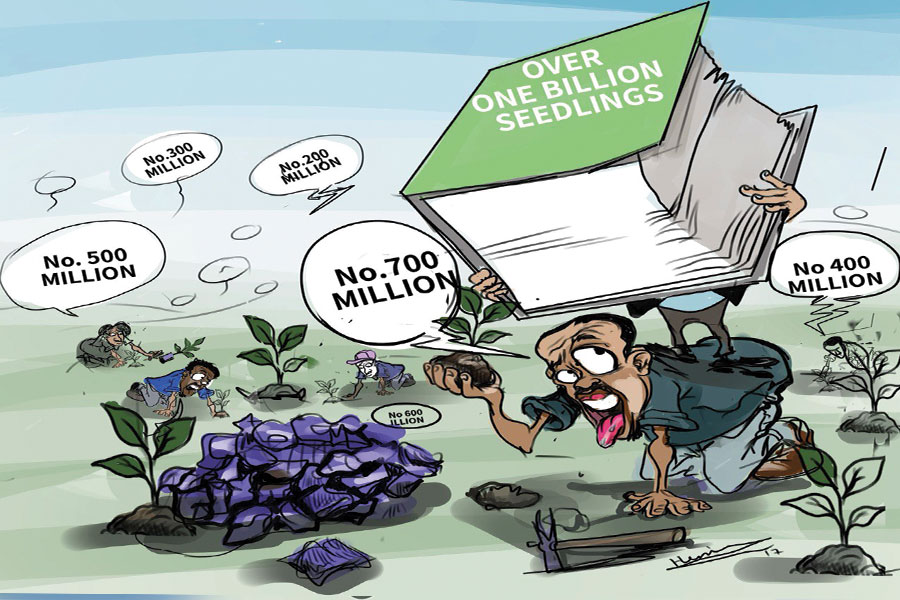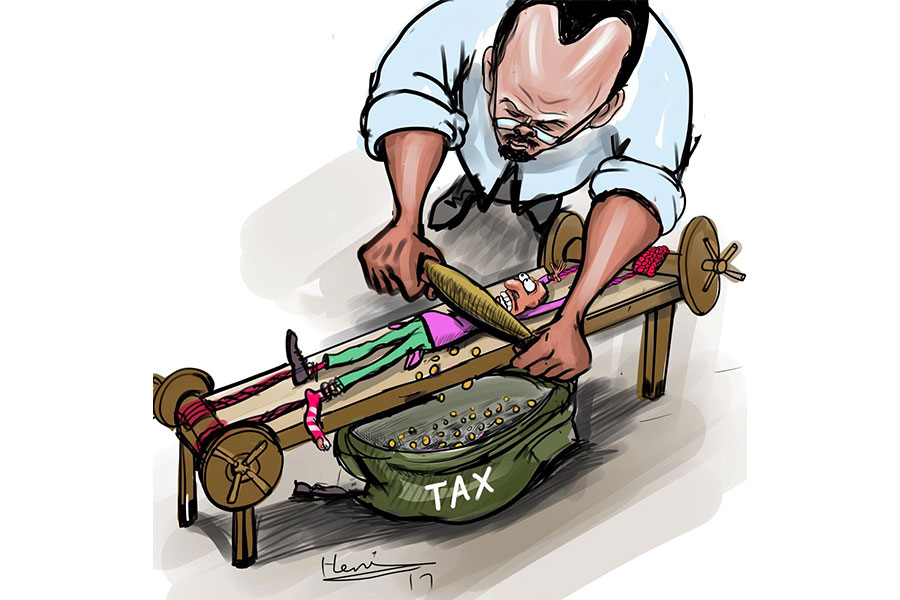
My Opinion | 133416 Views | Aug 14,2021
Jun 15 , 2025.
The tightly managed currency market looked calm last week, yet beneath the surface, banks were jockeying for position in ways that unveiled deeper pressures ahead.
Over the six trading days beginning June 9, 2025, the Birr (Brewed Buck) slipped only marginally against the Dollar (Green Buck), holding to an average buying rate of 132.26 and an average selling rate of 134.66. However, these midpoint figures could disguise a widening rift between banks using divergent strategies to cope with scarce foreign exchange.
At one end of the spectrum was Oromia Bank, which kept its six-day average buying quote at 134.89 and its selling quote at 137.59. In a market where most lenders live by a uniform two percent spread, the Bank’s pricing adds an unmistakable premium.
The move revealed either a scramble for dollar deposits to shore up reserves or a calculated bid to lure exporters and remittance flows away from rivals. By paying in foreign currency, Oromia Bank was betting that the Birr would continue to weaken and that the extra margin would compensate for the cost.
Anchoring the opposite pole is the state-owned Commercial Bank of Ethiopia (CBE). With average quotes of 131.51 Br to buy and 134.13 Br to sell, CBE remains well below the industry mean, a position consistent with its dominant share in the interbank market. The Bank’s flat line throughout the week demonstrated a disciplined detachment from auction-driven fluctuations, reinforcing the sense that official guidance, not competitive zeal, sets its course.
Between these poles, the market was shifting. Dashen Bank and Bank of Abyssinia, both long counted among the market’s heavyweight price setters, edged toward the lower end on Saturday, June 14, posting buying rates under 132 Br. The rare alignment with newer fourth-generation lenders, such as Gadaa, Goh Betoch, Hijra, Siinqee, Tsedey, and ZamZam, disclosed a recalibration of risk appetite.
Whether the shift proves fleeting or structural remains to be seen, but it is an unmistakable sign that even legacy players feel the gravitational pull of tighter Birr liquidity.
The National Bank of Ethiopia (NBE), whose indicative rates serve as the market’s benchmark, exhibited the most volatility among all market players. It opened the week buying dollars at 134.42 Br, slipped to 134.13 by June 13, then steadied. On the selling side, the Central Bank lifted its quote to 134.91 Br midweek before easing to 134.66 Br.
Its spreads swung from 0.02pc on June 9 to 0.65pc on June 10, collapsed to zero by June 12, and rebounded to 0.40pc by week’s end. Market watchers saw these erratic moves signalling policy experimentation, as the authorities test how far they can guide prices without jolting inflation or upsetting the auction system now in place.
Ahadu Bank registered a more subtle shift. Its buying quote rose from 131.96 Br to 132.26 Br last week, while the selling quote jumped to 134.95 Br on June 12 and held there, nudging the spread to 2.03pc. The tweak appears to be a defensive response to rising demand or liquidity stress, an attempt to preserve margin amid a tightening supply of hard currency.
Coop Bank, by contrast, barely budged. It maintained a 131.86 Br buying rate, almost unchanged, and a steady 134.49 Br selling rate, deviating only briefly on June 13 when its spread hit 2.04pc, before reverting.
The week displayed a marketplace quietly segmenting into tiers.
On one tier are the aggressive banks, mainly Oromia Bank, with Awash and Zemen edging in, that were willing to pay above the pack to secure dollars. On another tier sit conservatively priced banks led by CBE and now, at least temporarily, Dashen and Abyssinia. Their quotes mirrored those of Coop Bank on June 14, all clustering at about 131.98 Br to buy.
The convergence unveiled a new clearing level favoured by banks that prefer caution over competition.
Underlying these tactical manoeuvres is the auction mechanism introduced to tame the parallel market. Banks submit bids under the ceiling set by the Central Bank, which hopes disciplined spreads will prevent a spiral of depreciation.
In practice, however, the market has created room for winners and losers. Banks with better access to official supply can afford to quote lower rates to customers, confident they will replenish dollars at auction. Those shut out or short on liquidity offer higher prices to attract inflows, widening their spreads or rolling the dice on future depreciation.
For corporate treasurers and ordinary savers, the week’s numbers may appear academic. The Birr’s midpoint barely moved, and spreads were kept at the two-point benchmark. However, the underlying shifts matter because they signal where the next bout of volatility might erupt.
If aggressive banks like Oromia Bank lock in more dollars, liquidity in the rest of the system could tighten further, forcing reluctant players to follow their lead. However, if the Central Bank throttles supply to cool bidding wars, the premium could jump to the parallel market, widening the very gap officials hope to close.
Saturday’s pattern captured the tension neatly. As CBE, Coop, and Dashen anchored at 131.98 Br, the Central Bank and Oromia Bank posted rates above 134 Br for buying a dollar, stretching the corridor despite official efforts to hold it. That divergence revealed the risk that policy and market forces could soon come into conflict.
Should the Brewed Buck weaken too quickly, import costs could spike, testing inflation-control efforts. If it remains too rigid, exporters may balk, remittances could bypass formal channels, and the parallel market premium might widen anew.
For now, uniformity still dominates, and official guidance keeps most banks in line. But the façade of calm relies on a delicate balance. A few basis points here or there, a skipped auction, or a sudden surge in demand could tip the scales.
In such an environment, the stirrings seen last week may mark only the opening chapter of a broader realignment, one likely to grow more visible as the broader economy responds to debt talks, infrastructure needs, and shifting global capital flows.
PUBLISHED ON
Jun 15,2025 [ VOL
26 , NO
1312]

My Opinion | 133416 Views | Aug 14,2021

My Opinion | 129931 Views | Aug 21,2021

My Opinion | 127736 Views | Sep 10,2021

My Opinion | 125288 Views | Aug 07,2021

Aug 9 , 2025
In the 14th Century, the Egyptian scholar Ibn Khaldun drew a neat curve in the sand....

Aug 2 , 2025
At daybreak on Thursday last week, July 31, 2025, hundreds of thousands of Ethiop...

Jul 26 , 2025
Teaching hospitals everywhere juggle three jobs at once: teaching, curing, and discov...

Jul 19 , 2025
Parliament is no stranger to frantic bursts of productivity. Even so, the vote last w...